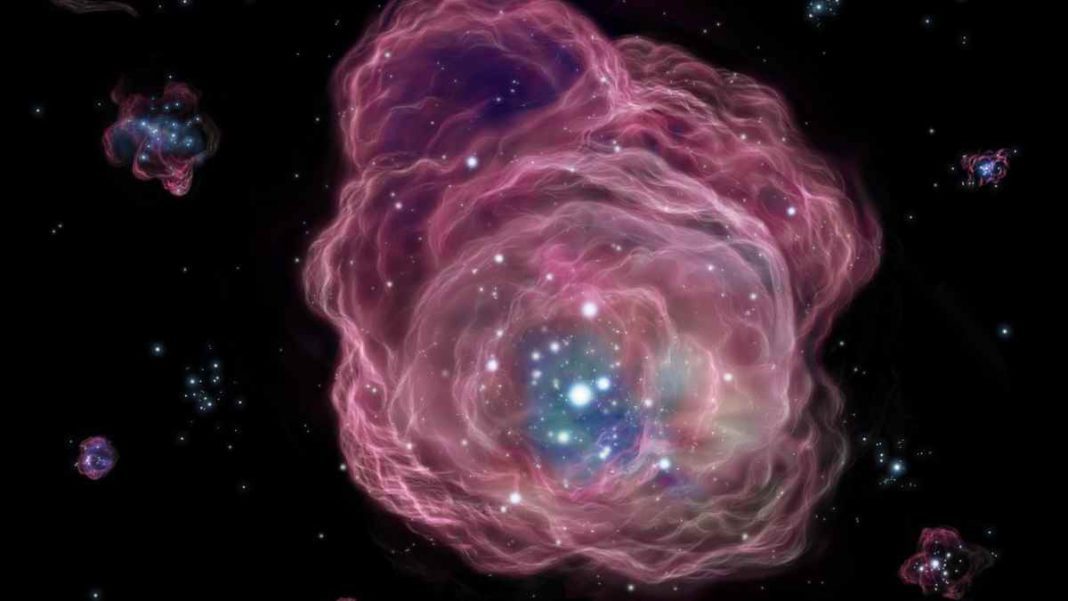UNITED STATES: In a monumental breakthrough, astronomers utilising the James Webb Space Telescope (JWST) may have obtained compelling evidence of the existence of the universe’s first stars, known as Population III stars.
These magnificent stellar giants thrived in ancient galaxies when the cosmos was still in its infancy, and until now, their presence has remained a captivating enigma.
JWST: A time machine peering into the past
Equipped with its remarkable infrared vision, the JWST has become an invaluable time machine, enabling scientists to gaze back more than 13.5 billion years into the depths of our early universe.
This is made possible by the fact that light from celestial objects takes time to reach us, meaning that what we observe is essentially a snapshot from the past.
Population III stars: brilliant blue pioneers
Population III stars emerged as the initial stellar population in the cosmos, brimming with hydrogen and helium and devoid of other metals.
Towering hundreds of times larger than our Sun, these brilliant blue behemoths led brief lives before meeting explosive ends, scattering the first metals across the cosmos.
Discovery in GN-z11: A stellar halo shrouded in mystery
Recently, astronomers leveraging the JWST’s data turned their attention to the spectrum of the galaxy GN-z11, a celestial object from a time when the universe was a mere 400 million years old. Astonishingly, they stumbled upon telltale signs of extremely hot helium lurking within a stellar halo.
To their surprise, this region displayed no trace of other metallic elements, leaving researchers to contemplate the possibility that Population III stars were responsible for heating and ionising the area.
Unravelling the Cosmic puzzle
While alternative explanations, such as the presence of an active galactic nucleus (AGN) at the core of the galaxy, were considered, several crucial factors failed to align with this hypothesis.
Consequently, astronomers are increasingly inclined to believe that the gigantic Population III stars may have played a role in forging the ancient elements observed in the galactic halo.
Cosmic Chemistry: Hydrogen, Helium, and the Birth of Metals
The origins of the universe commenced with the Big Bang, which introduced the first two elements—hydrogen and helium. These primordial elements continue to dominate the cosmos, accounting for over 99% of all known atoms even after 13.8 billion years of cosmic evolution.
The remaining metals, or heavier elements, emerged as by-products of phenomena such as supernova explosions and collisions involving white dwarfs and neutron stars. These metals mingled with hydrogen and helium, eventually contributing to the formation of subsequent generations of stars.
The elusive population III stars
This intricate interplay of elements led to a classification system that categorises stars into three distinct populations based on the presence of metals in their spectra. Population I stars, including our own Sun, are relatively young and abundant in metals.
Population II stars consist mainly of red dwarfs and exhibit fewer metals, while some remnants of dead stars, such as neutron stars and white dwarfs, also belong to this group. However, the most elusive group, Population III stars, has long eluded observation.
The journey continues
Although the current JWST observations are insufficient to definitively prove the presence of Population III stars, they provide crucial pieces to unravel the cosmic puzzle.
The tantalising hints and valuable data collected by the JWST offer a glimpse into the early universe and the role played by these ancient stellar giants in shaping its destiny.
Looking to the future
As the scientific community eagerly awaits further investigations and analysis, it is becoming increasingly likely that the James Webb Space Telescope will continue to unlock the secrets of the cosmos, shedding light on our universe’s enigmatic origins and helping humanity paint a more comprehensive picture of the vast expanse that surrounds us.
The research findings mentioned in this article are still awaiting publication in a peer-reviewed journal. The pre-print of the study, titled “JWST-JADES: Possible Population III Signatures at z = 10.6 in the Halo of GN-z11,” is accessible on the online repository [2306.00953]. JWST-JADES. Possible Population III signatures at z = 10.6 in the halo of GN-z11 (arxiv.org).
Also Read: JWST Discovers Evidence of Enormous “Celestial Monster” Stars



